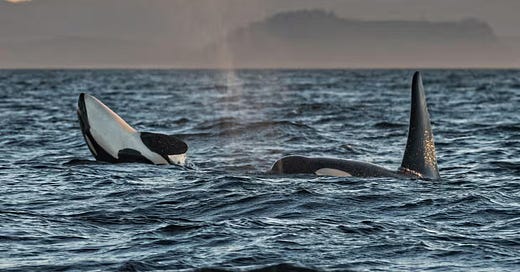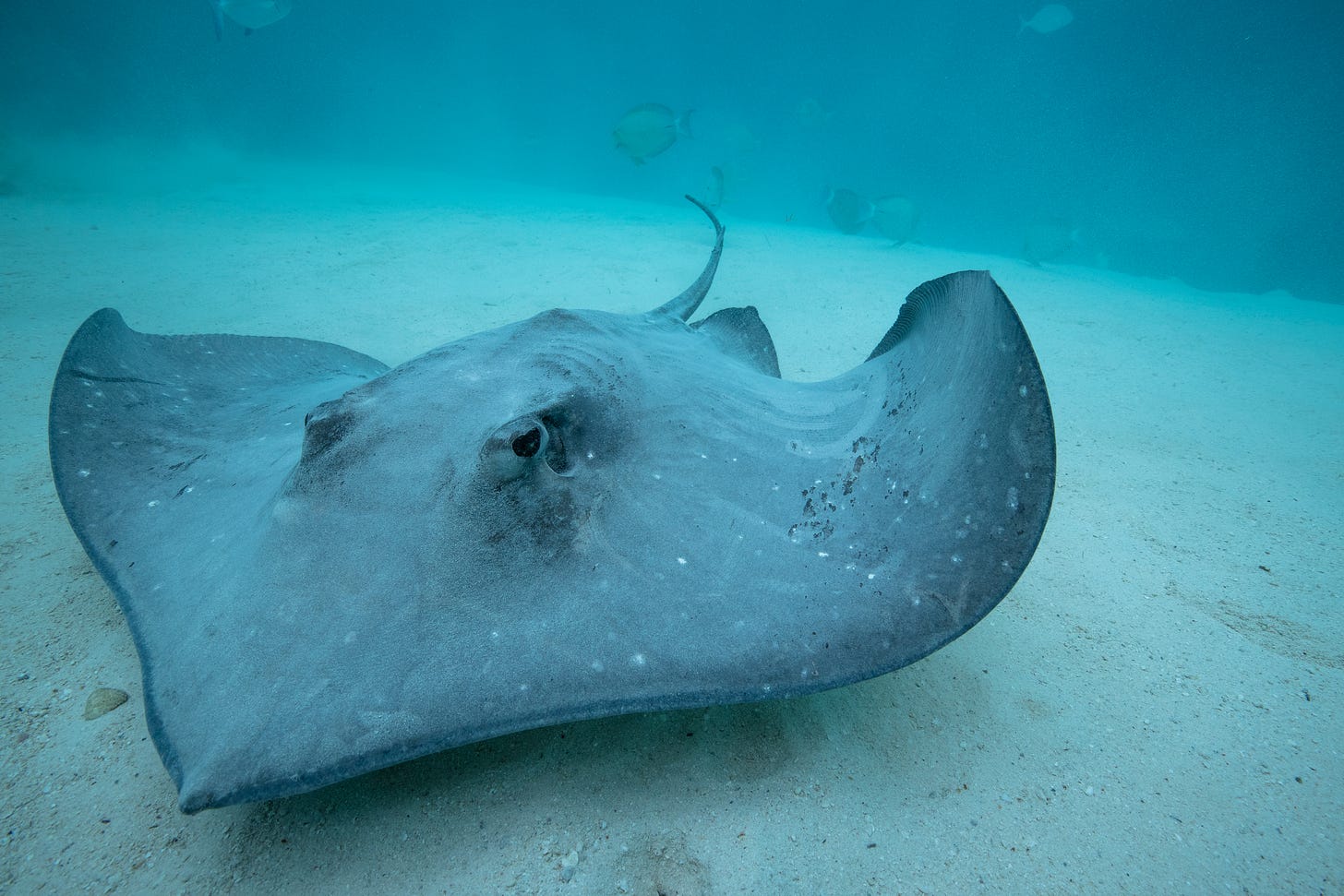Welcome to the latest edition of the Big Blue Bulletin – things have changed just a little bit around here as featured stories will now focus on whales, dolphins, and porpoises, with a little bit of commentary from me thrown in as well. Still, you can expect good news, bad news, and a cute creature in your inbox every Friday.
Let’s dive in 🐬
Ocean news
🗞️ Big news of the week -
🌱 Killer whales seen grooming each other with kelp in first for marine tool use
A new study using drone footage over the southern Salish Sea shows resident killer whales biting off short lengths of bull kelp, wedging the fronds between their bodies and rolling against each other—apparently to remove dead skin or parasites. Reported in Current Biology, it is the first documented case of mutual tool use in a marine mammal and underlines how little we know about orca social life. There are just 73 whales in this southern-resident clan, so every fresh insight is vital for their conservation; until now, marine tool use was thought to be limited to solitary acts such as sea otters cracking shells.
A new study in Frontiers in Marine Science has confirmed that sperm whales and other cetaceans are present in the exact Clarion-Clipperton Zones that The Metals Company intends to mine. Researchers from the University of Exeter and Greenpeace used visual and acoustic surveys to record whales and dolphins in both areas, adding to evidence that at least 20 cetacean species use this stretch of the Pacific.
The findings land just weeks before the International Seabed Authority meets amid growing calls for a moratorium on deep-sea mining. Critics note that noise from mining machinery and vast sediment plumes could disrupt whale communication and food webs. The Metals Company has meanwhile asked the US government for unilateral permission to begin commercial extraction, a move scientists warn could inflict “long-lasting, irreversible” damage on these deep-ocean ecosystems.
🦷 Rare sperm whale tooth unearthed at Copper Age megasite sheds light on ancient human-sea connections
Archaeologists at the 5,300 to 4,150-year-old Valencina megasite in south-west Spain have uncovered a worked sperm whale tooth—the first such find from Late Prehistoric Iberia. Bioerosion shows it washed ashore before Copper Age craftworkers shaped it, likely for ornaments or ritual pieces, and then reburied it in a pit. Reported in PLOS One, the find highlights how coastal resources travelled inland, hinting at wide trade networks and a deep Copper Age fascination with the sea.
🐬 Why Rome’s dolphins are fighting each other
New photo-analysis of 39 bottlenose dolphins living off the mouth of the river Tiber paints a bleak picture. 70% are visibly underweight, half bear net and line scars, including amputations, and almost every individual shows a skin disease linked to polluted river outflow and boat wastewater. Despite the area’s historic abundance of fish, overfishing appears to have tipped the balance, forcing dolphins to compete; bite marks from in-group clashes are common among many dolphins but are notably more frequent here than in healthy populations. With 500 migratory dolphins relying on this nursery each year—and mosaics proving the species has shared these waters with Romans for two millennia—the study is a stark warning that unchecked human pressure is eroding a relationship that has lasted since antiquity.
Have a great weekend! 📸
Cover image by Richard Ellis/Alamy.




